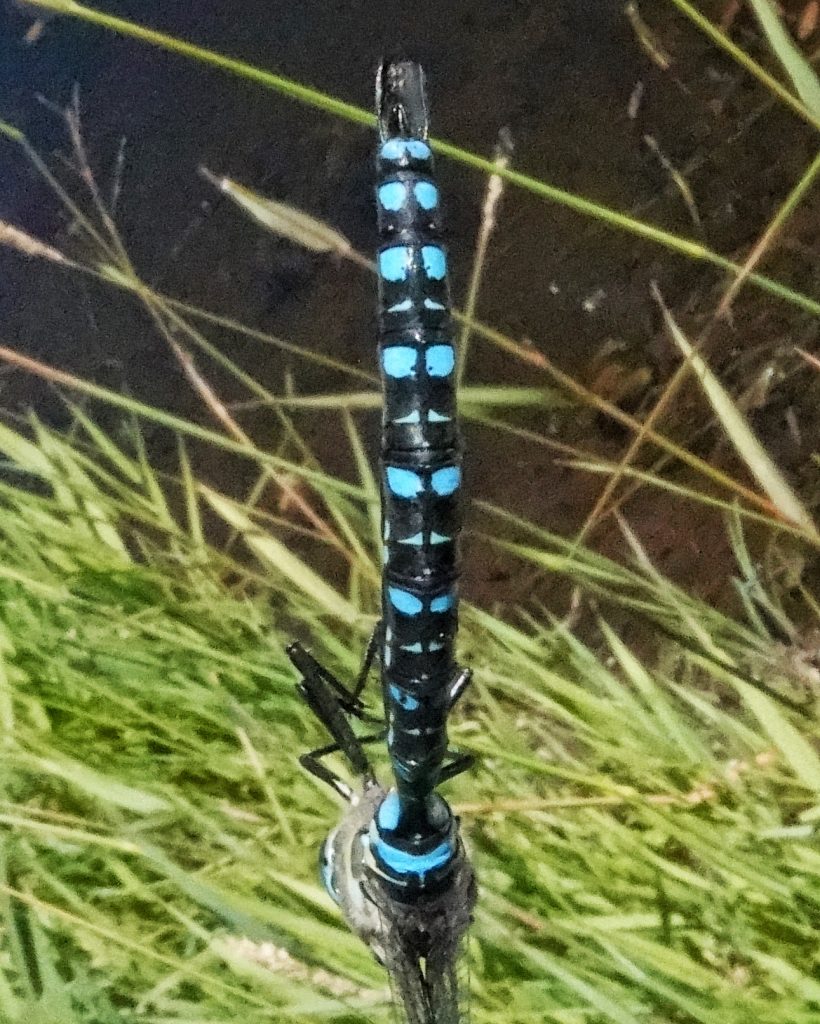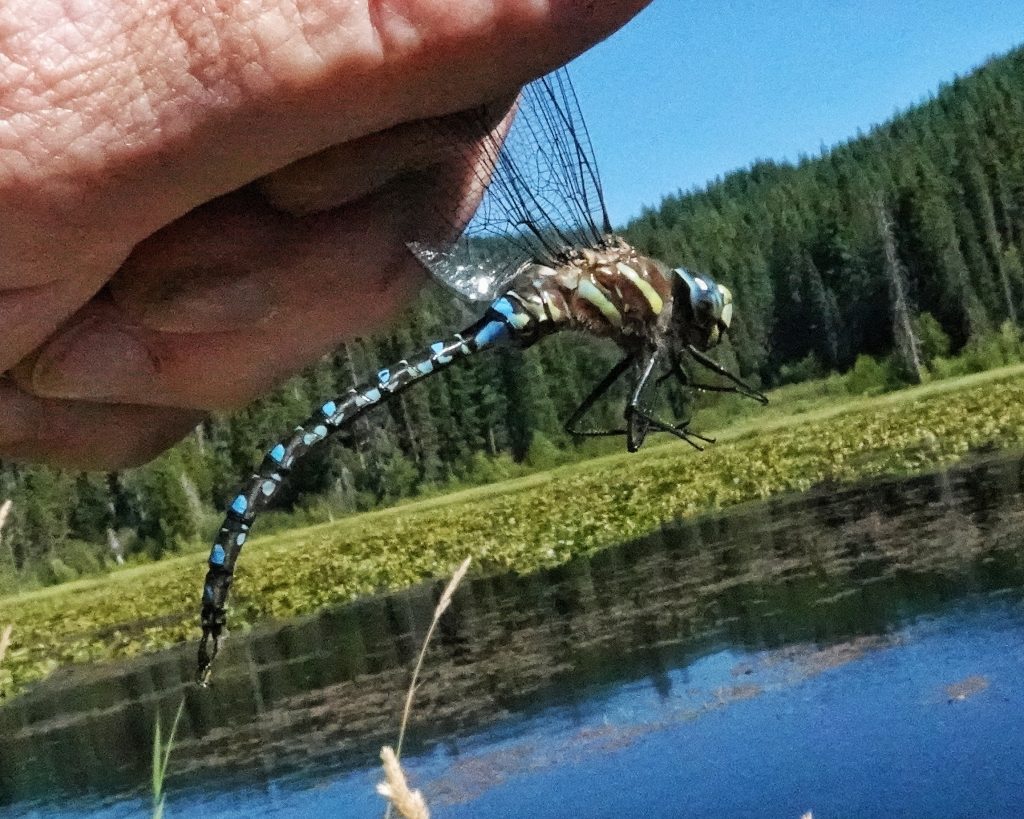
When I netted this dragonfly along the shoreline of South Prairie Lake, I immediately recognized it as a paddle-tailed darner (Aeshna palmata), and I almost released it without photos after admiring it because I assumed, since it is possibly the most common darner that I find, that I had already profiled it. But, because it was such a lovely specimen and I’d been rather incompetent with the net that day, I decided to document it, if only to prove to myself that I could still catch a flying darner. Once I had done so I did release it, and now having both hands free to lessen the possibility that I would fumble my phone into the water, I checked my list of species profiles and realized that it wasn’t there. But now it is.
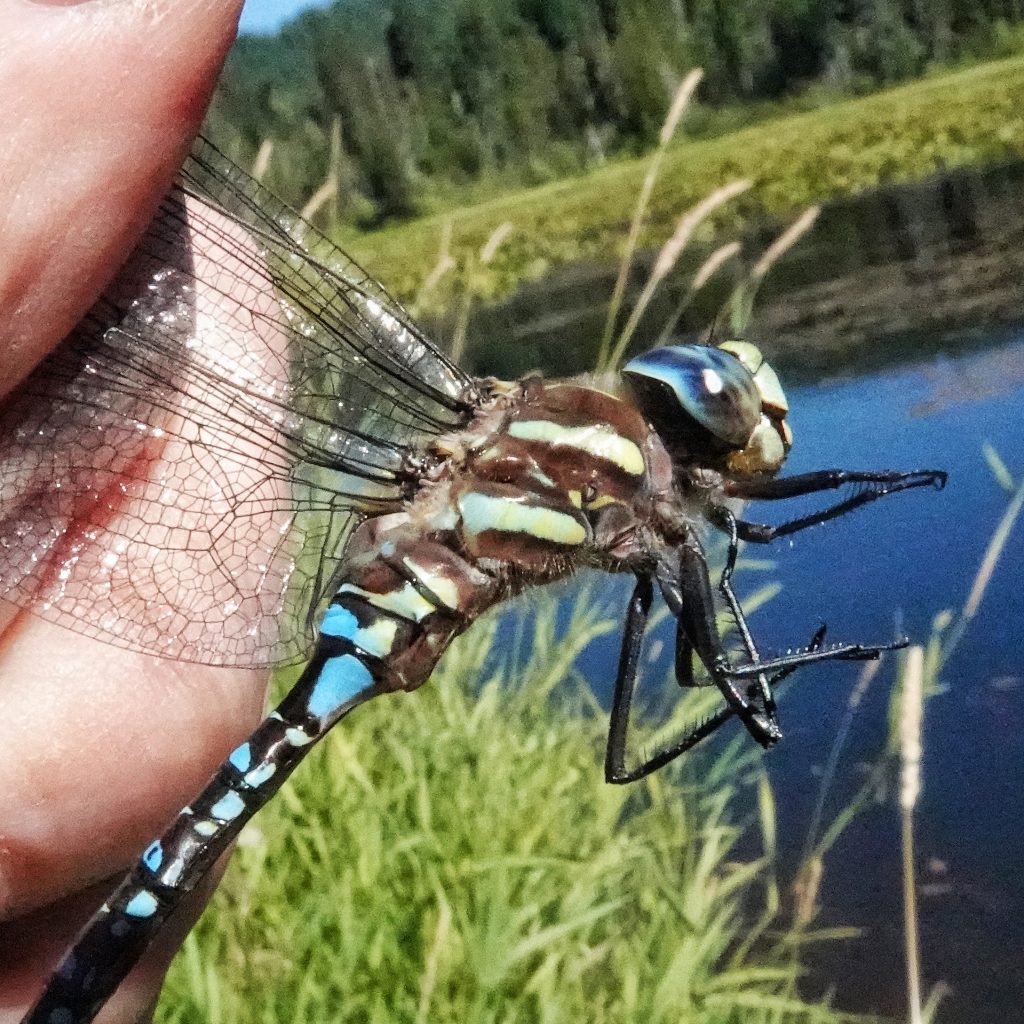
Paddle-tailed darners are nearly ubiquitous in the PNW. They can be found at mountain lakes and lowland sloughs, at desert ponds and rainforest marshes, and can even be found patrolling brackish waters along coastal tide flats. They are easily identifiable by the combination of having a line across the face, paired blue spots on the last abdominal segment (S10), and relatively straight thoracic stripes.
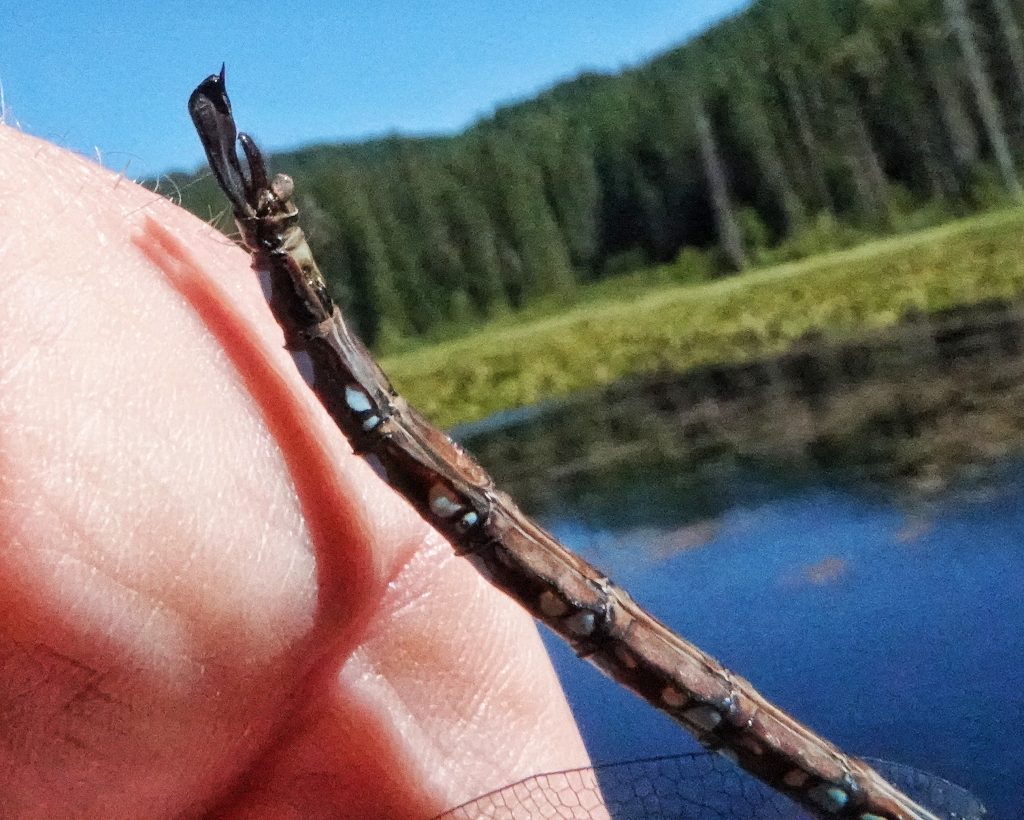
“Male Paddle-tailed Darners make short patrols of shorelines near trees in the open or between vegetation searching for females. They hover for long periods between patrol flights often returning to same open area along shoreline. Copulation is in flight over open water and mated pair then flies toward edge of wetland area. The pair will perch on trees or nearby vegetation until female begins oviposition. She lays eggs in grass blades, cattails, bulrushes and irises above waterline. Floating logs at waterline is another oviposition option (Dunkle 2000, Paulson 2009).” Paddle-tailed Darner – Montana Field Guide

Description– “Naiad– This is a large naiad, or immature dragonfly, with a length of 1 1/2 to 1 3/4 inches (37 to 43 mm). It is long and slender like other Darner naiads. It is mottled green and brown and has a single, rear-facing spine on each side of abdominal segments six through nine.Adult– This is a large dragonfly with a length of 2 1/2 to 3 inches (63 to 74 mm). The base color of the male is brown to brownish black. The top of the thorax is marked with several yellowish green dashes, while each side of the thorax is marked with a pair of fairly thick, yellowish green diagonal stripes. The abdomen is marked with bands or large spots of blue and smaller spots of yellowish green. Males have paddle-shaped anal appendages. Females usually have yellow abdominal spots instead of blue, but may be marked identically to the males.” Paddle-tailed Darner
Similar species– Walker’s darners and Aeshna umbrosa (Shadow Darner), lack spots on S10; Aeshna constricta lacks facial line and has flagged thoracic stripes; other male darners do not have paddle-shaped appendages with a spike.
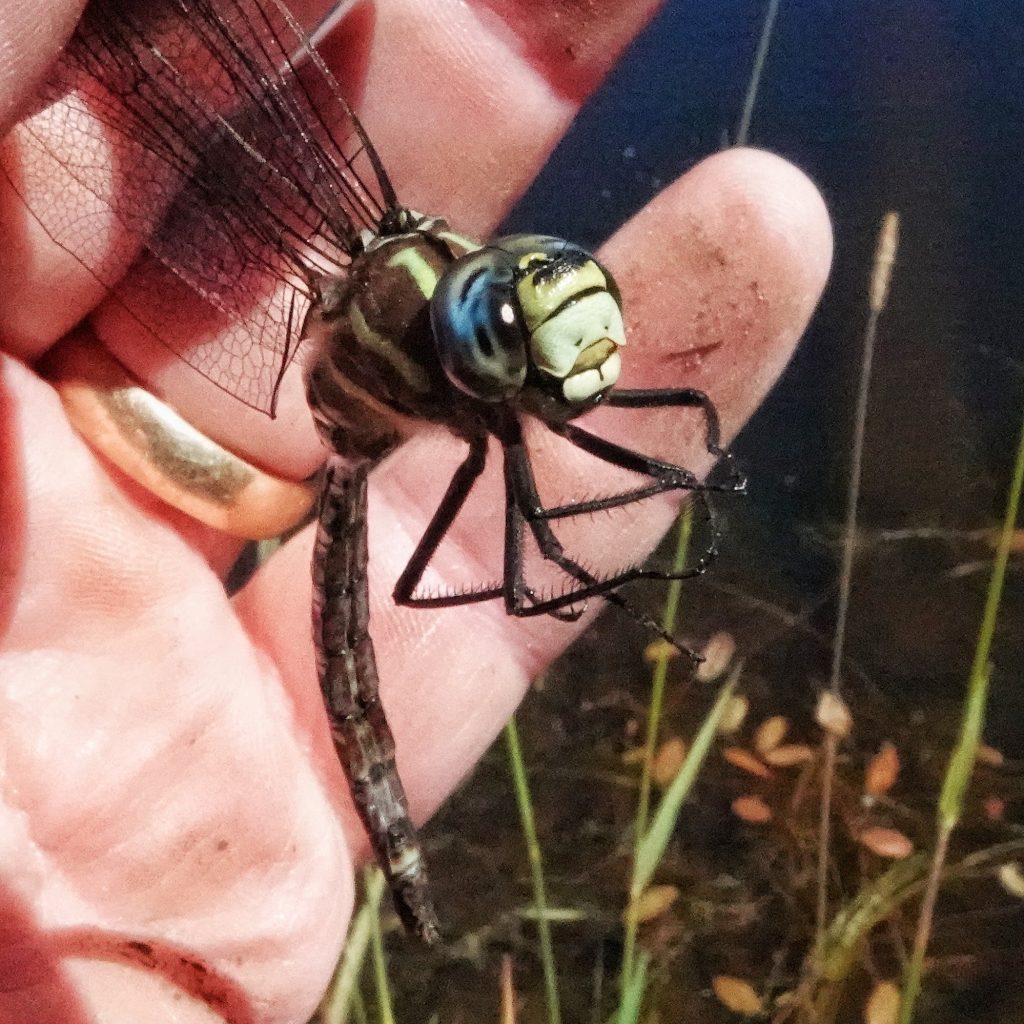
Habitat– Wherever there is still or slow moving relatively clear, natural water.
Range– “This species is found from Alaska south to British Columbia and Alberta to northern California, Utah and Colorado.” Paddle-tailed Darner; found region wide in appropriate habitat in the PNW
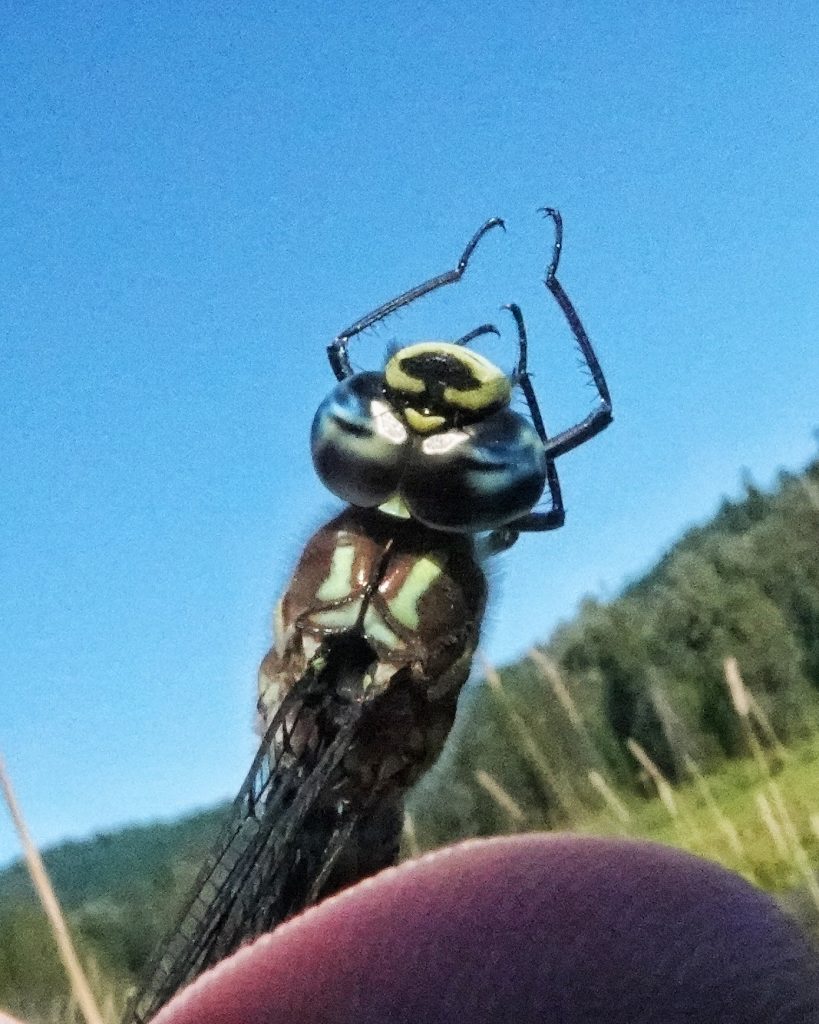
Eats– “Larvae feed on a wide variety of aquatic insects, such as mosquito larvae, other aquatic fly larvae, mayfly larvae, and freshwater shrimp. They will also eat very small fish and tadpoles. Adult- The dragonfly will eat almost any soft-bodied flying insect including mosquitoes, flies, small moths, mayflies, and flying ants or termites.” Paddle-tailed Darner – Montana Field Guide
Eaten by– Fish, amphibians, and other aquatic insects (including dragonfly larvae) prey on the larvae; agile birds of all sorts prey on the adults.
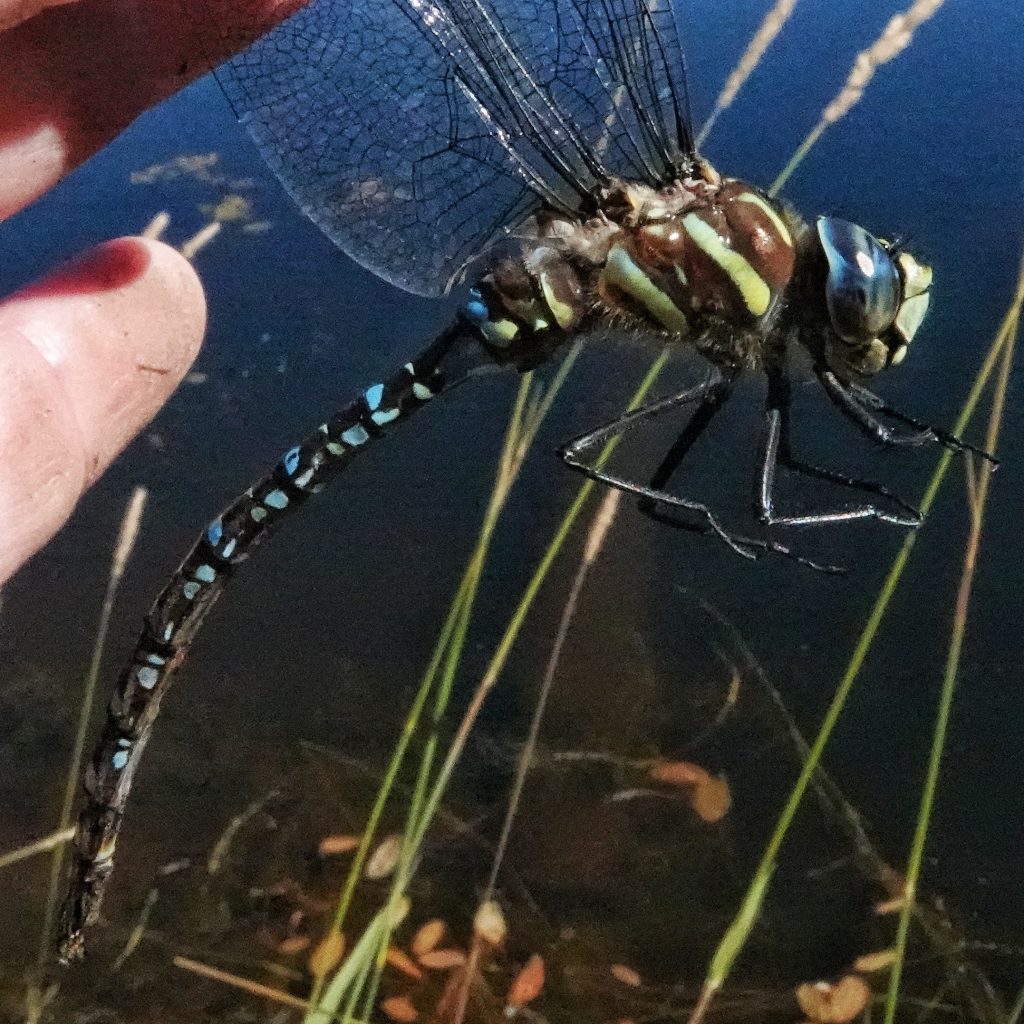
Adults active– Late June into November
Life cycle– Nymphs climb on aquatic vegetation and woody material to stalk their prey, and probably require 2-3 years to reach maturity.
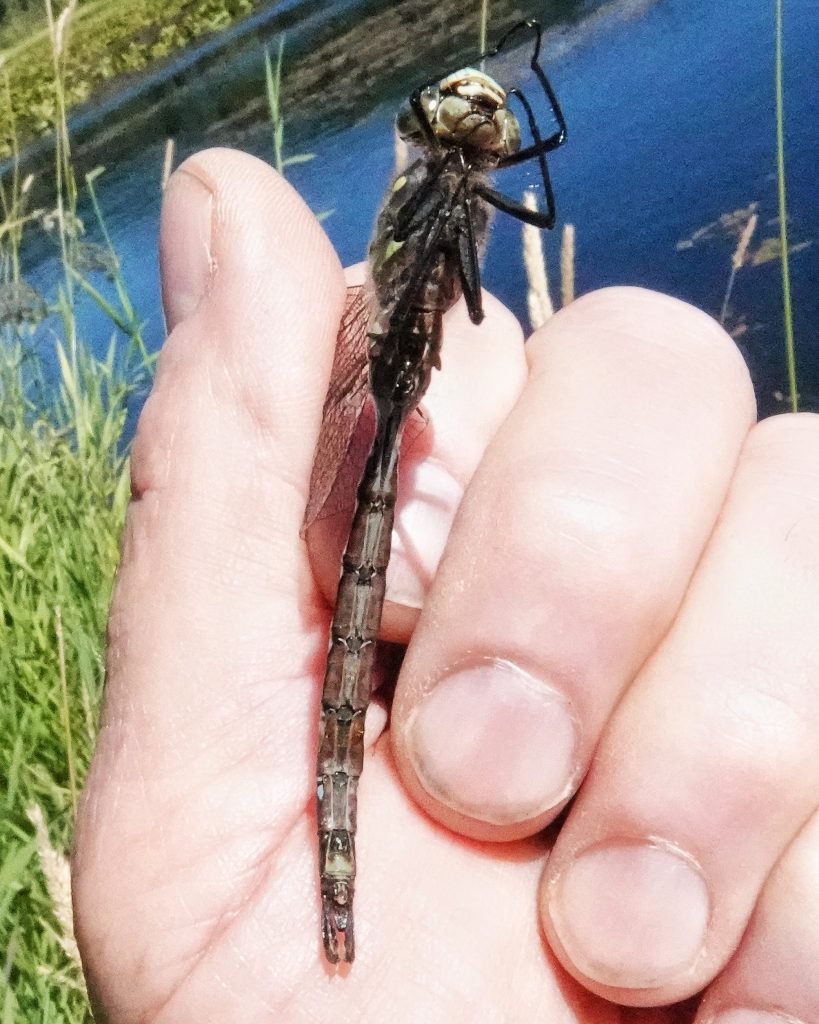
Etymology of names– The origin of the name Aeshna is obscure, but it has been suggested that it is a corruption of the Greek word for ‘ugly/deformed’, or a corruption of the Greek word for ‘spear’, which seems more likely. The specific epithet palmata is from the Latin word for ‘palm of the hand’, and here references the broad appendages of the males.
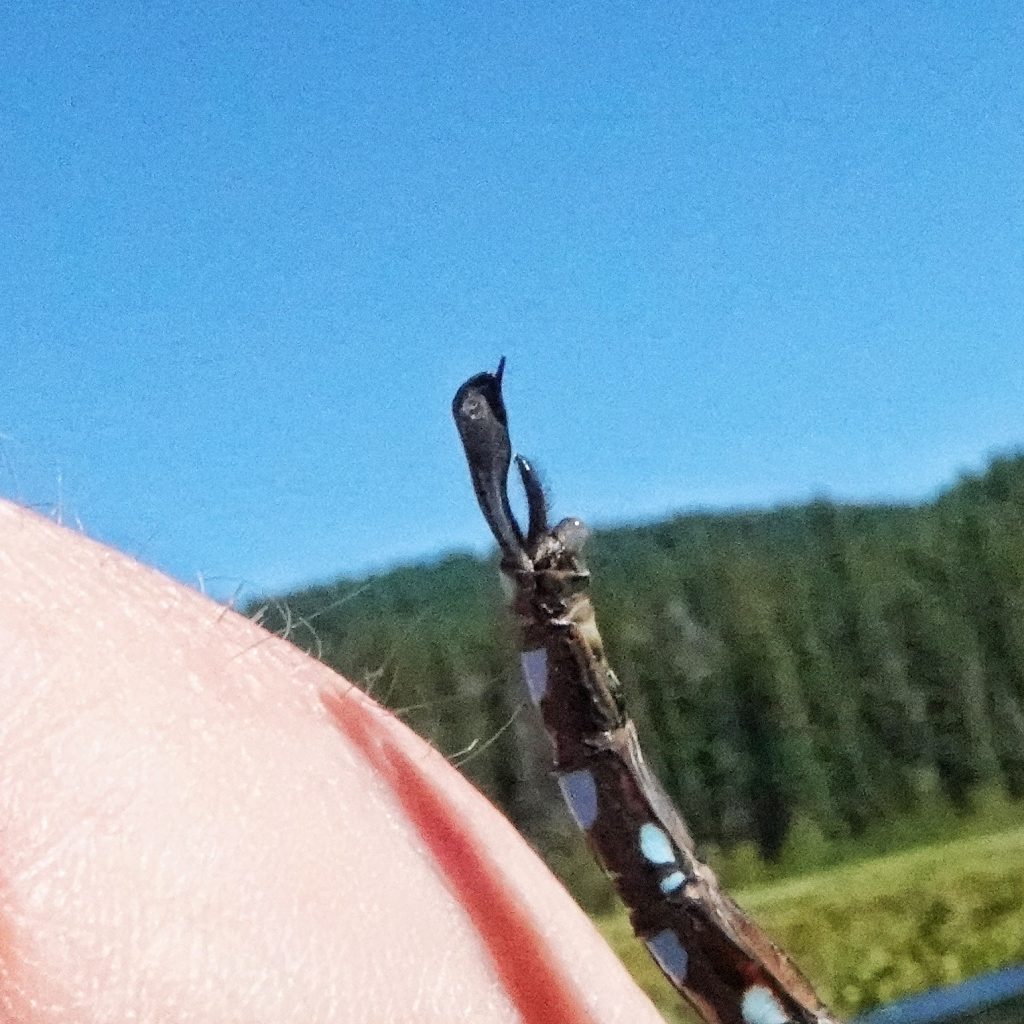
Paddle-tailed Darner – Montana Field Guide
Aeshna palmata – Paddle-tailed Darner
Species Aeshna palmata – Paddle-tailed Darner – BugGuide.Net
Paddle-tailed Darner (Aeshna palmata) – Missoula Butterfly House & Insectarium
https://en.wikipedia.org/wiki/Paddle-tailed_darner
